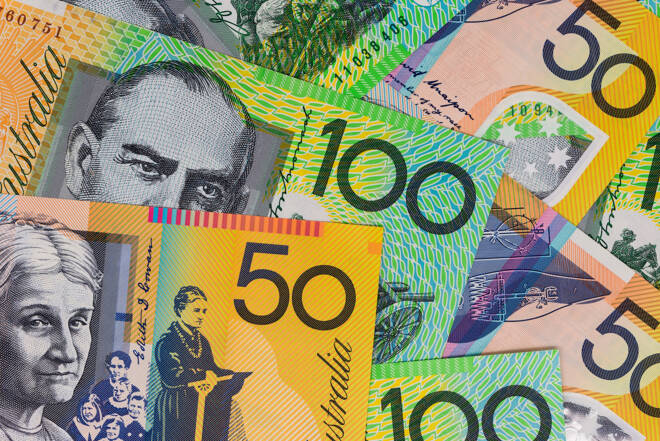Advertisement
Advertisement
AUD to USD Forecast: China Stimulus Bets, US Inflation, and Fed Speakers
By:
Stimulus hopes from Beijing and key data points will steer the AUD/USD this week, impacting monetary policy and trade dynamics.
Highlights
- The AUD/USD gained 0.09% on Friday, ending the session at $0.67124.
- On Monday, stimulus chatter from Beijing and central bank commentary are focal points.
- US consumer inflation expectations and Fed speakers need consideration later in the session.
Friday Overview of the AUD/USD
The AUD/USD gained 0.09% on Friday. Partially reversing a 0.37% loss from Thursday, the Australian dollar ended the session at $0.67124. The Australian dollar fell to a low of $0.66404 before rising to a high of $0.67478.
An Important Week for the Aussie Dollar
Investors continue to hold out for a meaningful stimulus pack from China to boost demand. A stimulus package could drive demand for iron ore and other Australian exports, a boon for the Aussie dollar.
Inflation and trade data from China (Fri) could convince Beijing to deliver more to boost the Chinese economy. Significantly, China accounts for one-third of Australian exports. With a trade-to-GDP ratio over 50%, a pickup in demand from China would support the Australian economy and the Aussie dollar. It is also worth noting that 20% of the Australian workforce is in trade-related jobs.
Considering the Australian economic calendar, retail sales (Tues) and the Monthly CPI Indicator (Wed) will move the dial. Trade data (Thurs) could also influence the RBA’s rate path projection.
A pickup in consumer spending and sticky inflation could leave a rate hike on the table. A more hawkish rate path would impact borrowing costs and reduce disposable income. Downward trends in disposable income could curb spending and dampen demand-driven inflation.
However, there are no Australian economic indicators to consider on Monday. The lack of stats will leave stimulus and central bank chatter in focus.
US Economic Calendar: Consumer Inflation Expectations
On Monday, investor attention will return to inflation. The Consumer Inflation Expectations Report will garner investor interest. An unexpected rise in inflation expectations could test bets on a Q1 Fed rate cut. The report precedes the all-important US CPI Report on Thursday that could decide the Fed rate path through Q1.
Economists forecast Consumer Inflation Expectations to soften from 3.4% to 3.3% in December.
Beyond the numbers, Fed speakers also need monitoring. FOMC voting member Raphael Bostic is on the calendar to speak on Monday. Reaction to the US Job Report warrants investor attention.
Short-Term Forecast
Near-term AUD/USD trends hinge on inflation and Australian retail sales. Divergence in inflationary pressures would likely be the main driver. However, a pickup in Australian retail sales and a pledge for more stimulus from Beijing could tilt monetary policy toward the Aussie dollar.
AUD/USD Price Action
Daily Chart
The AUD/USD held above the 50-day and 200-day EMAs, affirming bullish price signals.
An AUD/USD move through the $0.67286 resistance level would give the bulls a run at the $0.68096 resistance level.
Focal points include stimulus chatter from Beijing, US consumer inflation expectations, and central bank commentary.
However, a fall through the $0.67 handle would bring the 50-day EMA and the $0.66162 support level into play.
A 14-period Daily RSI reading of 52.16 indicates an AUD/USD return to the $0.68096 resistance level before entering overbought territory (typically above 70 on the RSI scale).
4-Hourly Chart
The AUD/USD remained below the 50-day EMA while holding above the 200-day EMA, sending bearish near-term but bullish longer-term price signals.
An AUD/USD move through the $0.67286 resistance level would bring the 50-day EMA into play. A break above the 50-day EMA would give the bulls a run at the $0.68096 resistance level.
However, a break below the 200-day EMA would bring the $0.66162 support level into play.
The 14-period 4-Hourly RSI at 42.35 suggests an AUD/USD break below the 200-day EMA before entering oversold territory.
About the Author
Bob Masonauthor
With over 28 years of experience in the financial industry, Bob has worked with various global rating agencies and multinational banks. Currently he is covering currencies, commodities, alternative asset classes and global equities, focusing mostly on European and Asian markets.
Did you find this article useful?
Latest news and analysis
Advertisement
